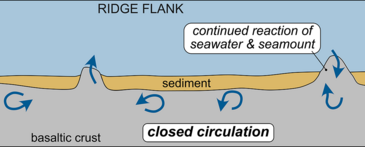Elmar Albers, Svenja Jöns, Axel Gerdes, Andreas Klügel, Christoph Beier, Simone A. Kasemann, Wolfgang Bach
Geology 51(2023), 875
https://doi.org/10.1130/G51238.1
Carbonate formation during the alteration of oceanic crust is a global CO2 sink. Its timing and controls are not well understood, particularly in volcanic seamounts, which react with seawater over tens of millions of years. We report in situ U-Pb age dates of carbonate vein and void fill in 50–74 Ma basaltic basement of the Louisville Seamount Chain. More than 90% of the carbonate formed <20 m.y. after seamount emplacement. Vesicle carbonate precipitated within 8 m.y. (median = 2.9 m.y.) whereas vein carbonate grew over longer time spans (median = 8.1 m.y.). The duration of carbonation was hence limited despite the basement’s long-term exposure to seawater. The age dates imply a rapid infill of vesicles by alteration of confined domains around vesicles. Carbonate formation in veins extended for longer periods of time, likely due to the late opening of fractures, which exposed fresh reactive rock surface to circulating seawater long after the formation of the basement.
We suggest that carbonate growth ceased after the volcanic rocks were too altered to liberate sufficient Ca2+ and generate the alkalinity required for carbonate precipitation. A critical extent of rock reactivity is required to sustain carbonate formation. Carbonate precipitation likely ends after much of the exposed basaltic substrate has been altered and the rock reactivity drops below this critical threshold. These findings help to explain the generally short duration of carbonation in the flanks of mid-ocean ridges.


